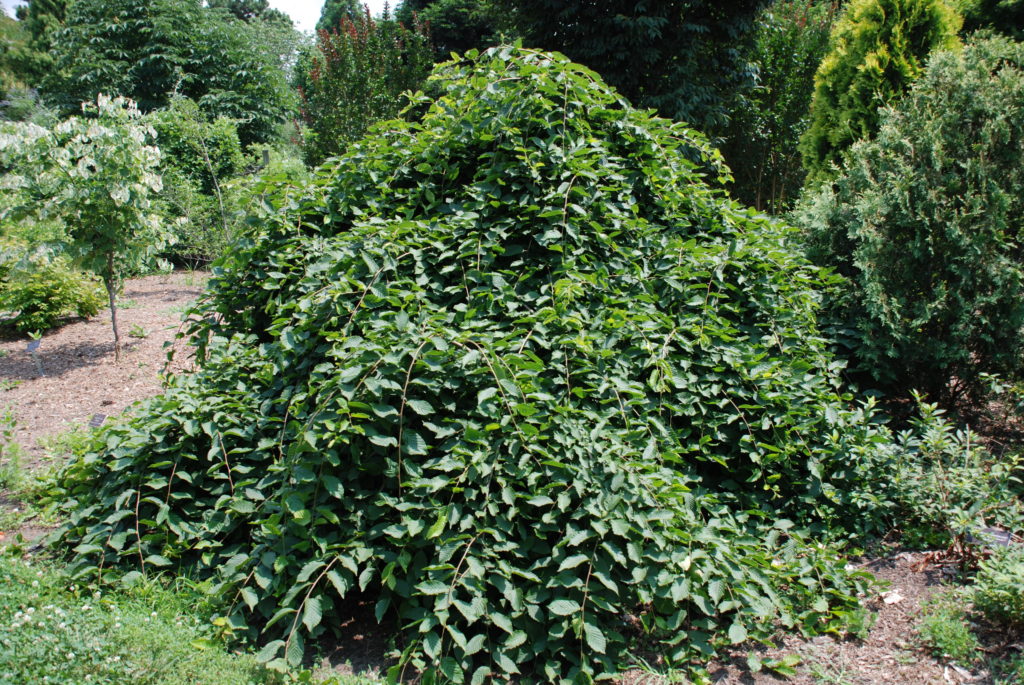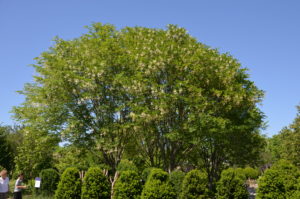European hornbeam (Carpinus betulus),, aka ironwood and musclewood, is an underused tree in the U.S. It makes an excellent urban street and park tree. It develops a full, dense canopy and has very few maintenance requirements (USDA hardiness 4-7).
European hornbeams are planted across Europe for their formal upright form as street trees, privacy screens, and windbreaks. Seedling trees typically measure 40-60 feet high with a pyramidal to broad rounded canopy. Several cultivars are available, but some (like weeping and dwarf forms) may be difficult to purchase in U.S. nursery commerce.
Its dense summer foliage is medium green, leaves up to 4 inches in length, and exhibit little susceptibility to disease and insect problems. Flowers (catkins) are visible in early spring before the foliage emerges. Male catkins are yellowish and female catkins are greenish. Fruits are small nutlets in 3-lobed bracts that appear in late summer.
Hornbeams adapt to a wide range of soils and grow best in full sun. Trees tolerate hot and dry conditions once established in the landscape, but prosper in cool well mulched ground. Trees tolerate occasional wetness and slightly alkaline soil pH. Annual feeding of young trees with a slow-release fertilizer is highly recommended.
Dense, compact and narrow when young, they develop a wide oval crown with maturity. Long, thick, dark green foliage with prominent veining finish a pleasing yellow-orange in autumn. Trunks have smooth gray bark and distinctive muscular fluted bark.
Hornbeams are an excellent choice for hedging and windbreaks, particularly upright growing forms. Trees are mostly free of disease and pest issues. Powdery mildew may occur after a wet summer and Japanese beetles may sometimes chew on summer foliage. Little or no pruning is generally needed.
Found on the streets of U.S. cities are three upright branched European hornbeam cultivars: ‘Fastigiata’, ‘Columnaris’, and ‘Frans Fontaine’. Refer to other blogs for cultivar descriptions.



 Posted in
Posted in 
